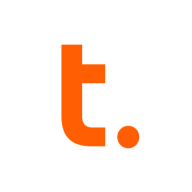

Teradata and IBM Db2 Database are both prominent players in the database solutions category. Teradata seems to have the upper hand in terms of advanced analytics and fast processing, providing a strong return on investment despite its higher initial cost.
Features: Teradata offers speed and scalability with its parallel processing and shared-nothing architecture, enabling efficient handling of large data sets. It integrates well with various APIs and tools, allowing for complex queries and fast analytics. IBM Db2, on the other hand, excels in integration capabilities, particularly within IBM ecosystems. It supports multiple platforms and offers autonomic features, providing reliability and robust performance.
Room for Improvement: Teradata could enhance cloud adoption, cost competitiveness, and support for unstructured data. Its high cost and challenging setup are noted issues. IBM Db2 might improve interface usability, pricing transparency, and support for newer analytics, as users find its complex systems and licensing difficult to navigate.
Ease of Deployment and Customer Service: Both Teradata and IBM Db2 provide on-premises and cloud deployment options. Teradata's customer service is mixed, with technical support being strong but response times needing improvement. It provides extensive training resources through Teradata University. IBM Db2 offers strong support, though some users perceive it as slow and less responsive for integration issues. Teradata's documentation and training resources add to its user accessibility, while IBM Db2 integrates seamlessly into existing IBM environments.
Pricing and ROI: Teradata is recognized for its high cost, but users appreciate its superior analytics and performance in large-scale operations, resulting in good ROI. Its intricate pricing structure necessitates careful negotiation. IBM Db2's pricing is less transparent, with higher fees reported, but its feature-rich environment and integration capabilities provide a solid return on investment. Teradata focuses on high-performance needs, while IBM Db2 is suited for stability within IBM ecosystems.
We have realized a return on investment, with a reduction of staff from 27 to eight, and our current return on investment is approximately 14%.
We normally receive substantial discounts on the price.
The customer support for Teradata has been great.
Customer support is very good, rated eight out of ten under our essential agreement.
The technical support from Teradata is quite advanced.
This expansion can occur without incurring downtime or taking systems offline.
Teradata's scalability is great; it's been awesome.
Scalability is complex as you need to purchase a license and coordinate with Teradata for additional disk space and CPU.
I find the stability to be almost a ten out of ten.
The workload management and software maturity provide a reliable system.
It might be slightly slower than other database vendors, but it works well since banks typically do not move quickly with leading-edge technology.
Unlike SQL and Oracle, which have in-built replication capabilities, we don't have similar functionality with Teradata.
If Teradata could provide a list of certified experts, that would be fantastic.
Teradata is much more expensive than SQL, which is well-performed and cheaper.
Initially, it may seem expensive compared to similar cloud databases, however, it offers significant value in performance, stability, and overall output once in use.
We spent roughly $295,000 on setup costs.
IBM Db2 Database, because of enterprise performance and support, is why banks still maintain their relationship with it.
The IBM Db2 Database is trusted, and IT effort is less than any other product.
Teradata's security helps our organization meet compliance requirements such as GDPR and IFRS, and it is particularly essential for revenue contracting or revenue recognition.
The data mover is valuable over the last two years as it allows us to achieve data replication to our disaster recovery systems.
| Product | Market Share (%) |
|---|---|
| IBM Db2 Database | 7.6% |
| Teradata | 4.5% |
| Other | 87.9% |


| Company Size | Count |
|---|---|
| Small Business | 20 |
| Midsize Enterprise | 13 |
| Large Enterprise | 48 |
| Company Size | Count |
|---|---|
| Small Business | 26 |
| Midsize Enterprise | 12 |
| Large Enterprise | 49 |
Teradata is a powerful tool for handling substantial data volumes with its parallel processing architecture, supporting both cloud and on-premise environments efficiently. It offers impressive capabilities for fast query processing, data integration, and real-time reporting, making it suitable for diverse industrial applications.
Known for its robust parallel processing capabilities, Teradata effectively manages large datasets and provides adaptable deployment across cloud and on-premise setups. It enhances performance and scalability with features like advanced query tuning, workload management, and strong security. Users appreciate its ease of use and automation features which support real-time data reporting. The optimizer and intelligent partitioning help improve query speed and efficiency, while multi-temperature data management optimizes data handling.
What are the key features of Teradata?In the finance, retail, and government sectors, Teradata is employed for data warehousing, business intelligence, and analytical processing. It handles vast datasets for activities like customer behavior modeling and enterprise data integration. Supporting efficient reporting and analytics, Teradata enhances data storage and processing, whether deployed on-premise or on cloud platforms.
We monitor all Relational Databases Tools reviews to prevent fraudulent reviews and keep review quality high. We do not post reviews by company employees or direct competitors. We validate each review for authenticity via cross-reference with LinkedIn, and personal follow-up with the reviewer when necessary.